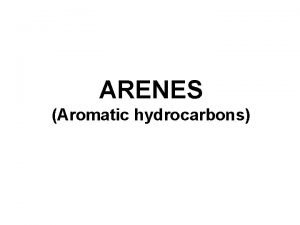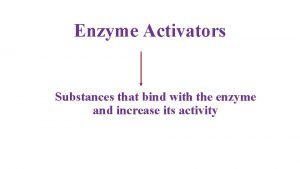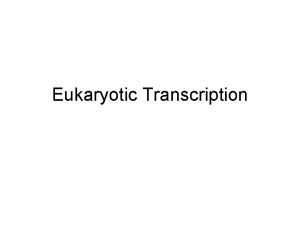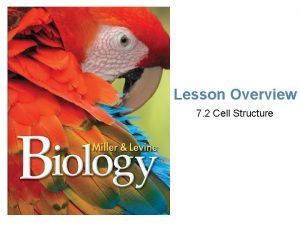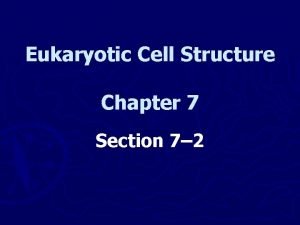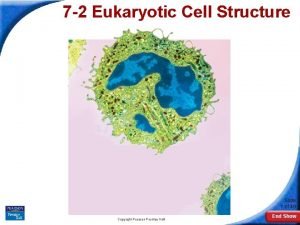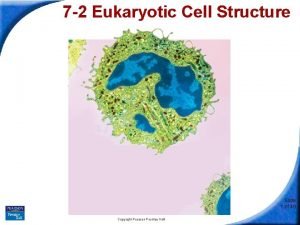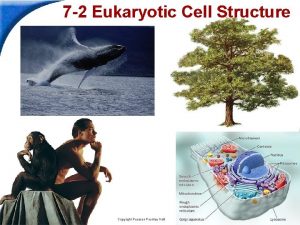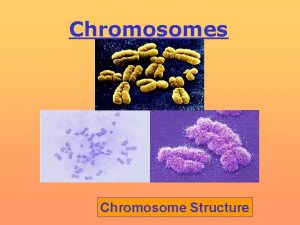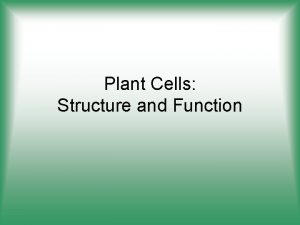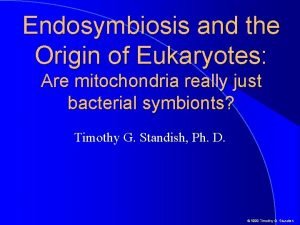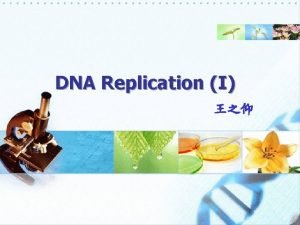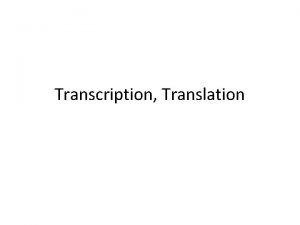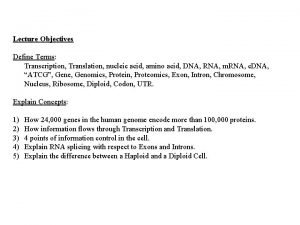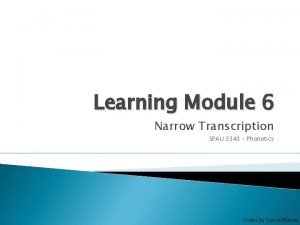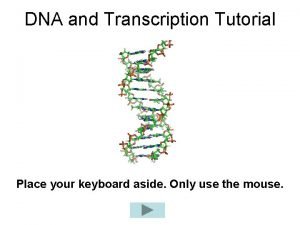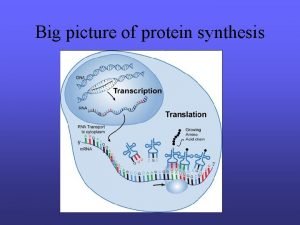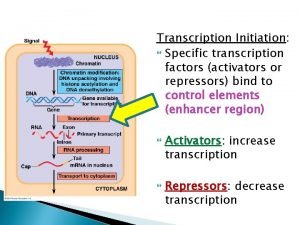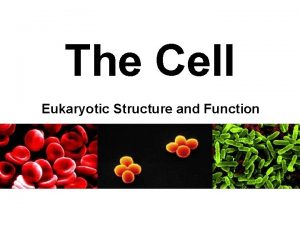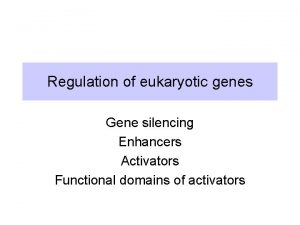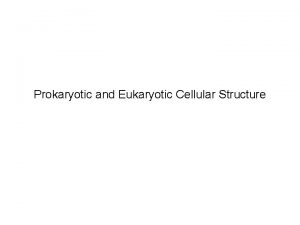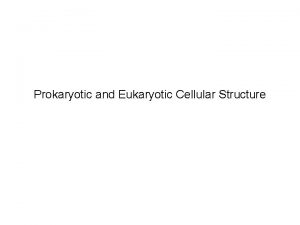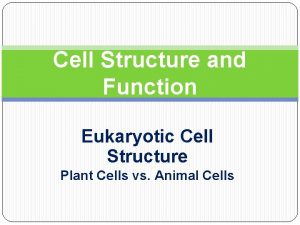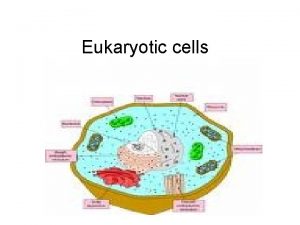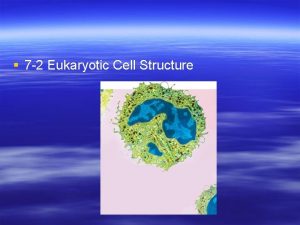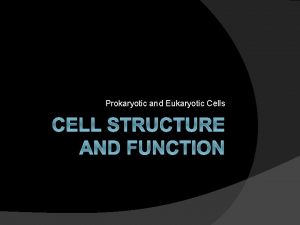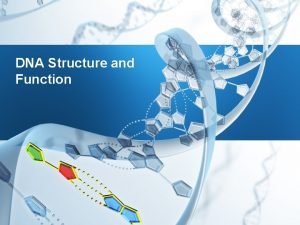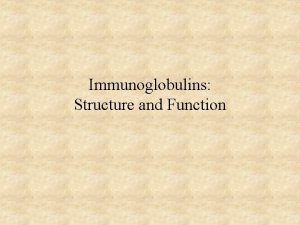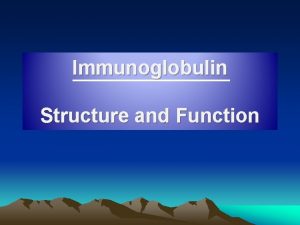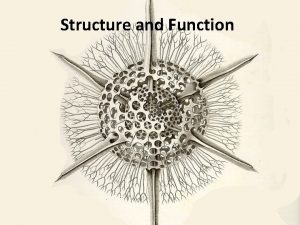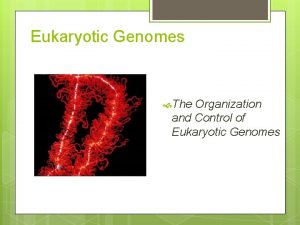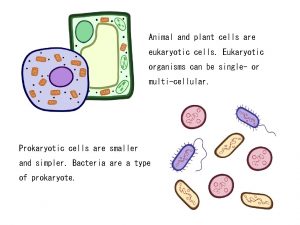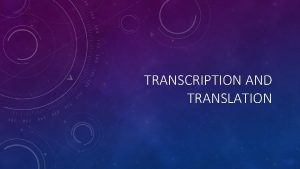Structure and Function of Eukaryotic Transcription Activators Many


























- Slides: 26

Structure and Function of Eukaryotic Transcription Activators • Many have modular structure: 1. DNA-binding domain 2. Transcription activating domain • • Proteins can have > 1 of each, and they can be in different positions in protein. Many also have a dimerization domain

Recent data suggests SP 1 actually has 4 activating domains.

Sp 1: Factor for Upstream (Proximal) Class II Promoter Element • Binds GC boxes, stimulates transcription • Interacts with TAFII 110 in TFIID • Also stimulates transcription of TATAless class II promoters (by promoting TFIID binding)

Activation Domains 1. Acidic (e. g. , GAL 4, 49 aa domain – 11 acidic aa) 2. Glutamine-rich (e. g. , 2 in Sp 1, ~25% gln) 3. Proline-rich (e. g. , CTF, 84 aa domain – 19 are proline)

DNA-binding domains 1. Zinc–containing motifs – Zinc fingers (Sp 1 and TFIIIA) – Zinc modules (GR and other nuclear receptors) – Modules with 2 Zinc ions and 6 cysteines (GAL 4) 2. Homeodomains - 60 -aa domains originally found in homeotic mutants 3. b. ZIP and b. HLH motifs - a highly basic DNA -binding domain and a dimerization domain (leucine zipper or helix-loop-helix)

Amino acid side chains in proteins can form Hbonds to DNA bases. Critical for sequencespecific binding to DNA.

3 views of C 2 H 2 Zinc fingers Often found as repeats in a protein. Bind in the major groove of DNA.

GAL 4 DNA Complex Dimerization domain Coiled coil (a helices) Fig. 12. 4 DNA-binding domain 1. 2 Zn+2 bound by 6 cysteines 2. A Short a helix that docks into major groove

Fig. 12. 6 Fig 12. 6

Fig. 12. 7 Glucocorticoid Receptor – DNA Interactions

- Homeotic mutants have wrong organs (organ-identity mutants) - Occur in animals and plants - Important regulatory genes Wild-type “Here’s looking at you” antennapedia

12. 9 • Homeotic genes are transcription factors! • Have a conserved DNA-binding domain (Homeodomain) that resembles a helix-loop -helix (HLH) domain. • Bind as a monomer

b. ZIP proteins • Have DNA binding and dimerization domains • DNA binding region is very basic (R and K residues) • Dimerization involves a Leucine Zipper • Can form heterodimers! Alpha helices form a coiled-coil with interdigitating leucines

A Leucine Zipper is a Coiled Coil Motif Peptide from GCN 4 Fig. 12. 10

Fig. 12. 11

Domain Independence demonstrated with a chimeric transcription factor Fig 12. 13

Function of Activation Domains • Recruit specific components of the pre-initiation complex (a), or the holoenzyme (b).

Holoenzyme or Component Recruitment?

GAL 4 (which binds to an upstream element) 1. Promotes binding of TFIIB, which promotes recruitment of the other factors and RNAP. – Probably binds directly to TFIIB (i. e. , it doesn’t work by stimulating TFIID to bind TFIIB tighter) 2. GAL 4 also promotes assembly of downstream basal factors, TFIIE and/or TFIIF+RNAP II.

Activation from a Distance: Enhancers • There at least 4 possible models Factor binding to the enhancer induces: 1. supercoiling 2. sliding 3. Looping 4. Tracking

Models for enhancer function Fig. 12. 20

E- enhancer Psi 40 - r. RNA promoter Transcription of DNAs 1 -5 was tested in Xenopus oocytes. Results: good transcription from 2, 3, and 4 (also 2 >3 or 4) but not 5. Conclusion: Enhancer does not have to be on same DNA molecule, but must be somewhat close. Rules out the sliding and supercoiling models. From Fig. 12. 22

Looping out by a prokaryotic, enhancer-binding protein visualized by EM. Ntr. C – protein that binds gln. A enhancer and RNAP σ54 polymerase – RNAP with a 54 -k. Da sigma factor (defective, needs enhancer) Like Fig. 9. 20

Combinatorial Transcription: expression and regulation depends on the combination of elements in the promoter human metallothionine promoter GC box MRE- metal response element BLE- enhancer that responds to activator AP 1 GRE- Glucocorticoid response element Fig. 12. 23

Insulators 1. 2. Block enhancers Also act as barriers to heterochromatin spreading induced by a silencer Fig 12. 28

Regulation of Transcription factors or “Regulating the Regulators” A lot of post-translational regulation: Why? - Quicker response time - Avoid silencing by keeping the transcription factor gene on (? ) Some of the mechanisms: 1. Coactivators or mediators 2. Phosphorylation-dephosphorylation: can be + or 3. Ubiquitination (deubiquitination): covalent attachment of ubiquitin (small protein) to lysines can modulate activity or trigger destruction 4. Sumoylation: covalent attachment of SUMO (small ubiquitin-like modifier) peptide to lysines, factor is inactivated but not destroyed 5. Acetylation: histone acetyltransferases (HATs) acetylate lysines on histone and non-histone proteins, can be + or -
 Activators and deactivators chart
Activators and deactivators chart Noncompetitive inhibitor
Noncompetitive inhibitor Prokaryotic vs eukaryotic transcription
Prokaryotic vs eukaryotic transcription Prokaryotic cells vs eukaryotic cells
Prokaryotic cells vs eukaryotic cells Eukaryotic transcription
Eukaryotic transcription Eukaryotic cell structure
Eukaryotic cell structure Section 7-2 eukaryotic cell structure
Section 7-2 eukaryotic cell structure Biology chapter 7 cell structure and function
Biology chapter 7 cell structure and function Eukaryotic cell
Eukaryotic cell Section 7-2 eukaryotic cell structure
Section 7-2 eukaryotic cell structure Section 7-2 eukaryotic cell structure
Section 7-2 eukaryotic cell structure How to read chromosome
How to read chromosome Plant cell
Plant cell Eukaryotic chromosome structure
Eukaryotic chromosome structure Eukaryotic chromosome structure
Eukaryotic chromosome structure Eukaryotic chromosome structure
Eukaryotic chromosome structure Dna coloring transcription and translation
Dna coloring transcription and translation Virusmax
Virusmax Complete the following venn diagram
Complete the following venn diagram How to write 115 on a check
How to write 115 on a check Bbc bitesize protein synthesis
Bbc bitesize protein synthesis Dna transcription and translation
Dna transcription and translation Dna replication transcription and translation
Dna replication transcription and translation Narrow transcription
Narrow transcription Dna and transcription tutorial
Dna and transcription tutorial Transcription and translation
Transcription and translation Picture transcription
Picture transcription
